It’s hot at Uluru in January. That’s why sensible Aussies visit in the cooler months. We were there mostly with tourists from the Northern Hemisphere wishing to escape the depths of their winter for a warmer climate. They can tick the achievement box on that one.
We knew it was going to be hot but everyone said, ‘don’t worry, it’s a dry heat’. Well…I’ve never known humidity like it. Because just as we arrived the semi-arid desert experienced a torrential downpour resulting in very muggy conditions. While I would have much preferred dry heat, I consider it very fortunate to have experienced rainfall in a part of the world that typically receives just 30cm (12 inches) of rain per year.
Uluru (formerly known as Ayers Rock) has the reputation of being the world’s largest monolith. But actually it’s not; that title belongs to the lesser known Mount Augustus in Western Australia. Even so, the sheer size of Uluru is staggering. It is 3.6km long, 1.9km wide, has a circumference of just under 10kms, extends several kilometres below ground level, and at 348mtrs in height, is taller than the Eiffel Tower.
Uluru is in the Uluru-Kata Tjuta National Park. In 1985 the Australian Government gave the Anangu Aboriginals (who had been living in the area for centuries), the 1326km area of land that included Ayers Rock and the Olgas. At that time the official name of the Rock was changed from Ayers Rock to Uluru and the Olgas became Kata Tjuta. The Australian Federal Government currently has a 99-year lease over the land and the area is looked after jointly by the Anangu people and Parks Australia.
Tourism to Uluru began in the 1930s when adventurous types were encouraged to come to the red centre and climb the rock. In 1966 the government wanted to install a chain-link fence to assist with the climb and advertised for contractors to submit proposals. The man awarded the contract is Peter Severin who owns and runs Curtain Springs Station which is about 100kms from Uluru. Everyone wonders why the chain-link fence that’s supposed to help you climb, is so low to the ground. The story I’ve heard is that when asked via snail-mail how high he was going to build the fence, Severin replied, ‘I’ll build it hip-height’. Those who read his letter thought that sounded sensible. Except that Severin stood less than five feet tall making the ‘hip-high fence’ level with everyone’s knees.
Should we talk about the climb? It’s so controversial. As previously stated, climbing Uluru was instigated by tourism bodies as a way of drawing people to the outback. And it was an incredibly successful marketing campaign with this semi-arid desert now receiving over 250,000 tourists per year. But the Anangu people do not want people climbing the rock. I don’t know of all the reasons but did hear that they believe Uluru is something to be respected rather than conquered, and that they feel responsible every time someone dies climbing the rock. Since records began, 37 have died either from falling, heat exhaustion or heart attacks.
Climbing the rock will officially be banned in October of this year, 34 years after the title deeds were handed over to the Anangu people. While for the next few months you can climb the rock, it is frowned upon and greatly discouraged. We were there five days and every day the climb was closed for one reason or another, giving the impression the climb is not really ever open.
That doesn’t stop everyone though. I heard a story that a few days before we arrived, three South Korean backpackers started the climb in the early morning, even though the climb was closed. They made it up to a certain point then two of the three decided to head back. The third climber wanted to keep going so continued on his own. He made it to the top but then decided not to follow the fence line back to the bottom but instead choose his own path. While trying to descend he slipped and fell a considerable distance landing on a ledge with multiple broken bones. Meanwhile, his friends had made it back to their accommodation and were waiting for him to appear. By late afternoon and still no sign of their friend, they contacted emergency services. A helicopter was dispatched and the backpacker was found on the ledge but because of unfavourable conditions, were unable to rescue him. Instead, they winched a paramedic down to him who had to render medical assistance and stay with him on that ledge until morning. At first light the helicopter returned and they were both winched from the ledge. The backpacker was given a fine of around $3,000 but his rescue cost the Australian taxpayer over $60,000.
You need a pass to enter the Uluru-Kata Tjuta National Park. These are available on-line or as you approach the park’s entrance. I recommend a three-day pass which will cost a family of four around $65.00. The pass gives you entry to the World Heritage site, and the fee assists with the running costs of the visitor facilities with a percentage going to the Anangu people to help support their community.
As you approach Uluru you will see the Uluru-Kata Tjuta Cultural Centre. Here you can learn about the history and culture of the Anangu people, the history of tourism to the area, and watch free presentations by the Anangu and park rangers. There is an information desk, shops where you can purchase souvenirs, an art gallery, a cafe and bathroom facilities – the only bathroom facilities at Uluru.
There are so many ways to see Uluru. You can drive around it in a matter of minutes which is a good starting point. You can book a guided tour but from my observation, those tourists were rushed and weren’t given the time to view all sides and angles of the rock. You can go on a Segway Tour but we didn’t have that option because a lot of the track was under water due to the rain. You can cycle around the rock but again, only if the track isn’t under water which is 99% of the time. Or you can see it on the back of a Harley Davidson. And of course, if you have deep pockets, you can see Uluru by helicopter.
What we did was walk. It’s free, good exercise, and you are in charge of your own tour. What you need to remember to pack is bottled water, especially in summer. As previously stated, it’s hot with temperatures close to 40C (104F) most days. As well, you need insect repellant. There are so many flies. So, so many. Sticky flies that won’t leave you alone. I can’t believe we forgot to pack insect repellant – you learn to walk with your mouth closed!
I recommend ensuring enough time to walk the whole way around the rock. This will take about four hours and you need to be mindful that there are no bathroom facilities or kiosks as you complete the walk; just desert.
Walking around 14kms (8.9 miles) allows you to view the rock from all sides and not just from the typical angle you see on tourism brochures. You’re in full control of your tour and can go at your own pace, enabling you to stop and appreciate the changes in the different angles. As well, when you’re on foot you’re moving at a pace where you can appreciate the impressive scenery, colours, and silence.
They say you must see Uluru at least once in your lifetime but I enjoyed it so much I could easily go back again. And again.
But maybe next time, I’ll go in winter.
Verdict: An absolute must-see
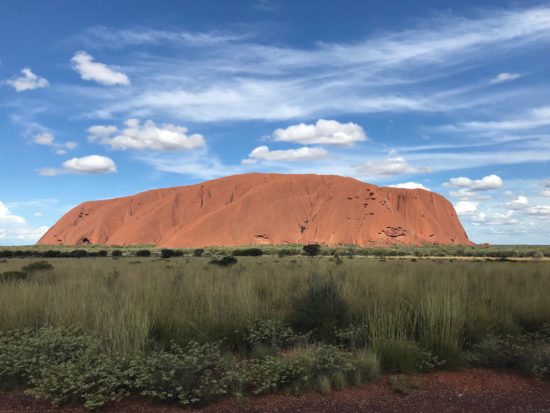
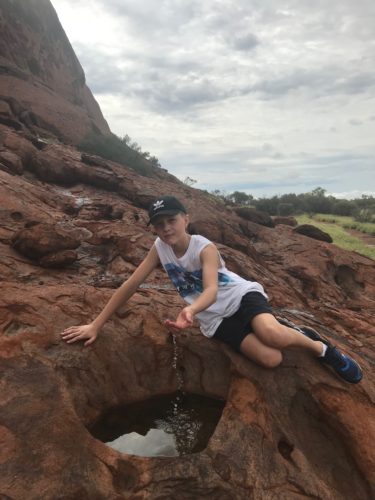

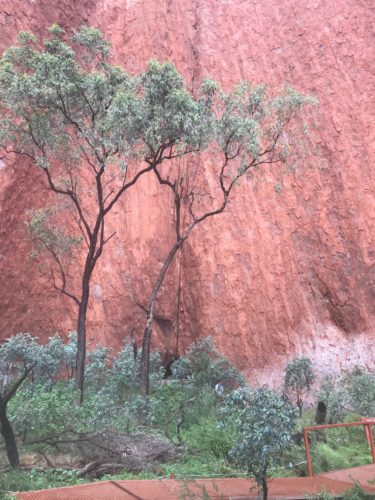
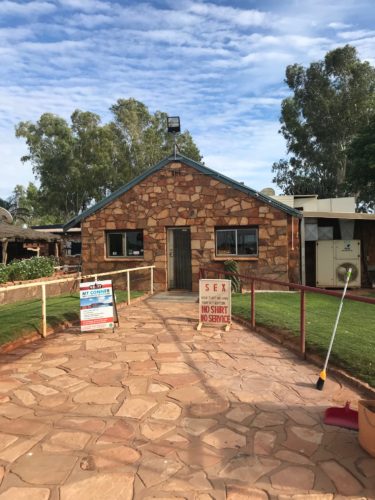
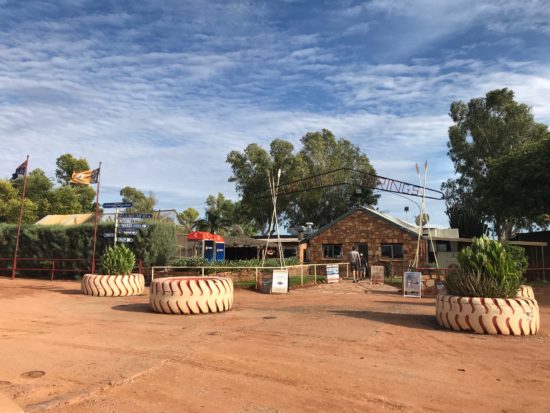
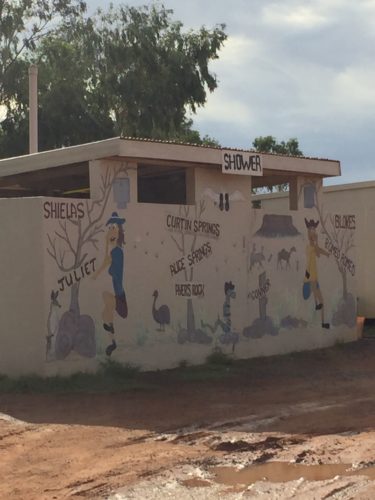
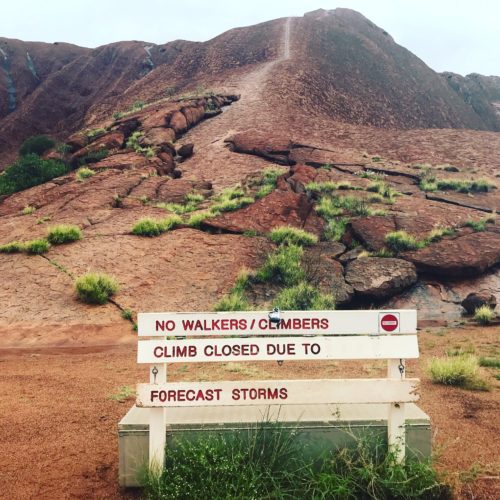
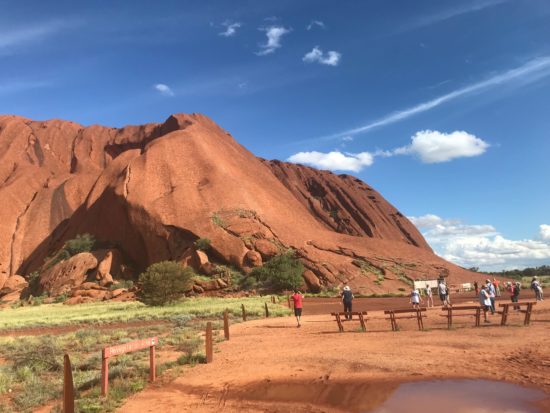

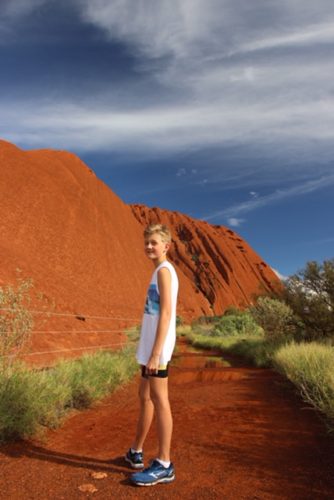
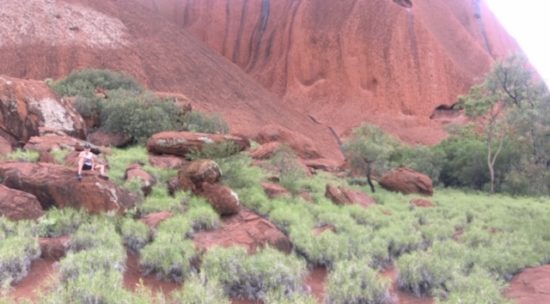
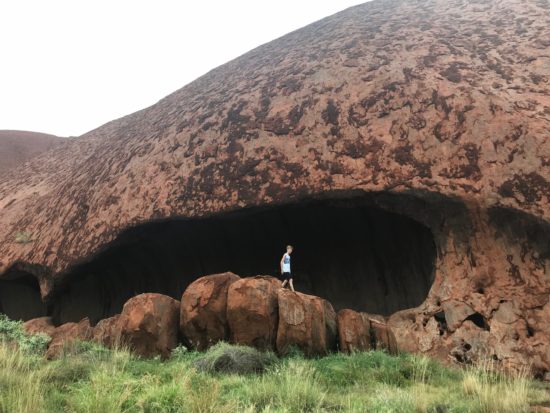
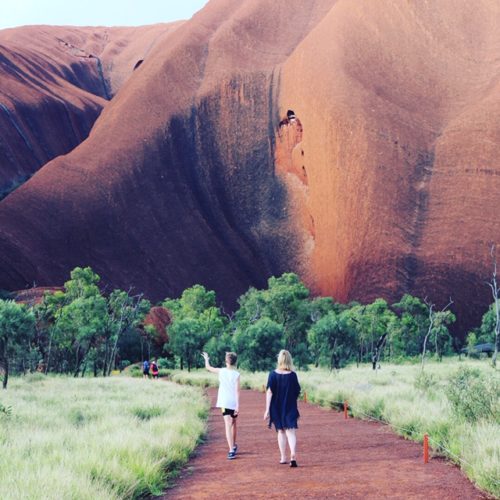
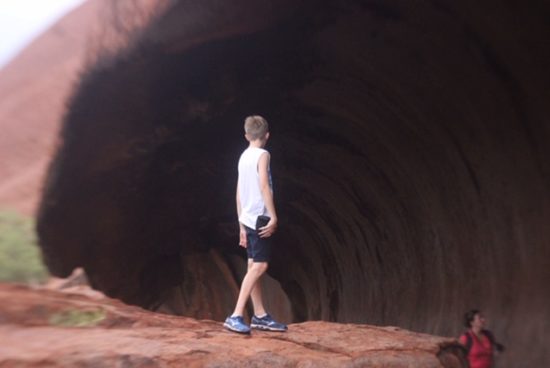
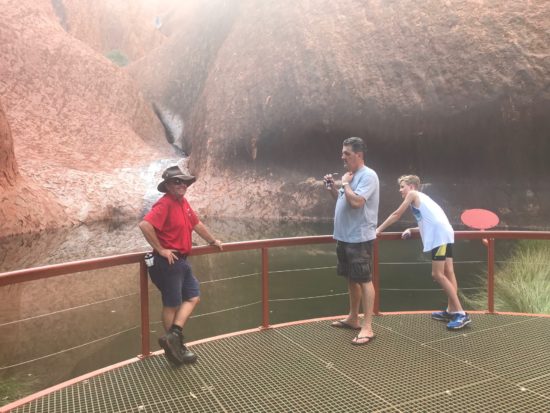
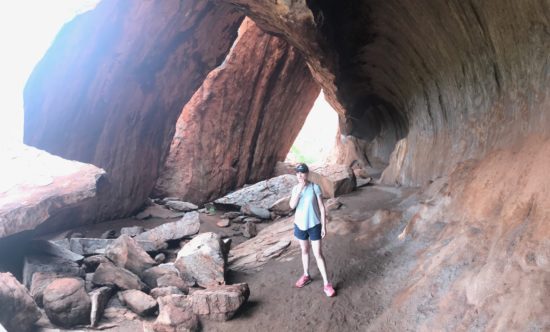
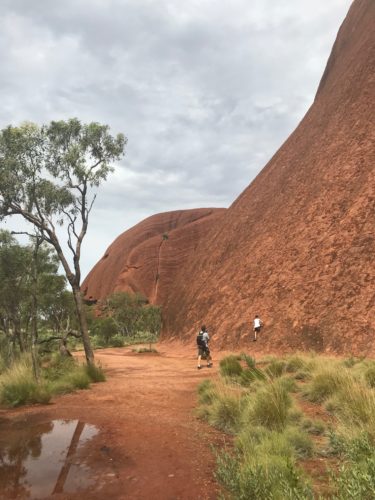
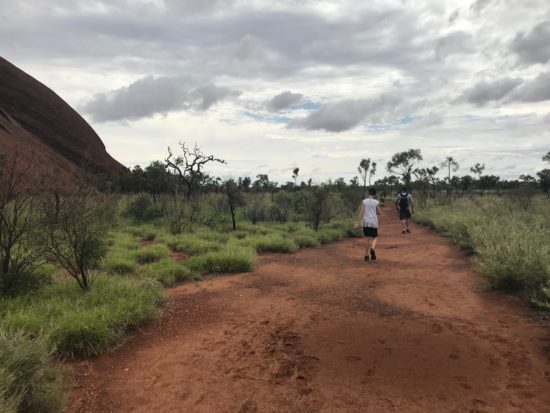
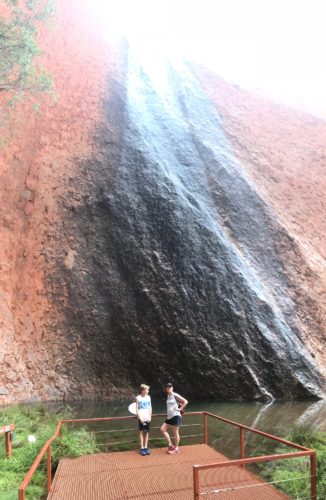



































We went in May one year many moons ago when my three sons were in primary school and they still have great memories of their trip and being able to see the magnificent stars.
I was there too much earlier hitchhiking and camping around Australia as you do when you are young and frivolous and dingoes stole our food! Just saying….
Wow! Great story. We didn’t see any dingos around Uluru but did see one on the drive from Uluru to Kings Canyon.
Loved this post! So informative and thrilled to see you blogging again!
Thanks so much, Lucy. I’ve got posts scheduled for the next six weeks.
So nice tomsee you again. Great post! I, Like most people, would so love to see it!
Thanks Victoria, it’s good to be back.
Good to see you!!
Thanks so much, Tammy
This post brings back so many memories! As part of our grand tour of AU and NZ in the fall of 2017, we spent a few days at Uluru. It was hot, and there were little flies. But all in all it was fascinating learning about the people and the rock (my husband and I were both geologists before retiring) and the climb. It made sense to us that they should close the climb out of respect.
Hi Mimi, good to hear you’ve made it to Uluru and it does seem to be a place that a lot of geologists will visit.
Great to see this and hear from you Charlie! Have seen thousands of photos of the area in my lifetime naturally but really appreciate yours as they have been taken from such non-touristy angles. Show us much more clearly what touring the area is all about . . . glad to see family members after all this time also ! Would you believe I seem to have been ‘everywhere’ but have yet to make it to Uluru 🙂 !
I hope you do get there soon, Eha. But I wouldn’t recommend the heat of January! And yes, it was great to walk around the rock and see all those angles that you never see on tourism brochures or the old postcards.
My dear friends are visiting Australia now. I can’t wait to hear about their adventures. I hope to get your way one day…but until then, I’ll dream of your beautiful country/continent and admire all the amazing places you visit. Ayres rock is definitely impressive! xo
I hope you do get here one day soon, Liz xx
Good to see a post from you again! And what a neat one — I’ve not heard of this, and it sounds like the sort of thing I’d like to see. Walking for me, please — Mrs KR and I are crazed walkers. (Well, crazed in general, I guess!). Fun read, great pictures — thanks.
I highly recommend it. But make sure you bring good walking shoes – you’ll need them!
hi charlie
great to see you blogging again:) i’ve never been to uluru but it sounds fascinating. i have climbed Mount Warning (over the QLD/NSW border) in my younger days but i think the local peoples are against it for the same reasons as uluru. Respect and all that. plus it’s a killer climb! i think a tourist died on top of it last year – mount warning i mean. they were camping and he got hit by lightning during a storm. so sad. hope you had a fab Xmas. see you round the blogging traps:-) cheers sherry
Hi Sherry, I hope you do get to Uluru one day. What a sad story about the tourist – very tragic.
Your photos are wonderful. I had never seen the rock from so many different perspectives: just as a lump on the horizon. It’s sad that people are disrespectful and reckless about access there.
best… mae at maefood.blogspot.com
Hi Mae, thanks so much.
Great post!!
Thanks Gail.
I keep hoping I might go there one day. Though I don’t know how I would go if I heard too many stories about stupid people climbing the rock – speechless at that! At least I had your beautiful photos to make me feel better about the rock. I would love to do that walk but did not realise how long it was – definitely sounds like a winter activity but maybe you had a quieter time in summer.
Hi Johanna, I hope you manage to get to the red centre one day. I think it was a quieter time to be there; we certainly didn’t see a lot of people as we wandered around the well-known landmarks – no crowds to battle which was nice.
As each before me has mentioned, it’s really good to see you posting, and to get a little peek at you and your rapidly growing son, too! What an incredibly fascinating monolith, and I enjoyed learning more about it, as well as an explanation of the impending “no climbing” rule. Seems reasonable to me! The walk-around would be something to brag about, and I’d enjoy that. 🙂 Maybe another time in cooler weather would be another experience altogether!
Thanks so much Debra. Lovely to hear from you again xx
What a beautiful and fascinating destination! And my daughter in college in Arizona would agree with you on the heat. She says that once it hits 120, it doesn’t matter that its a dry heat 🙂
What a delight fo see that you are blogging again. As you can see, you were really missed by all of us. I’ll have to do some catching up. That wonderful rock monolith is one of the things I always think about when someone mentions Australia…nice post.
Uluru looks like such an amazing place, even if you can’t climb it. I had read about it in Bill Bryson’s book on Australia but really didn’t have a feeling for the beauty of it. Great post and like so many others, I’m very happy to see you blogging again Charlie! 😀 I’m hoping to get back to it myself in the not too distant future.
Hi Betsy, so lovely to hear from you. Thank you for your kind words. I’ve missed you so I hope you do get back into blogging one day soon xx
Hey Stranger!!! Thank you for this post! I have always found Uluru fascinating from the various pictures I’ve seen; however, I didn’t know much about it. Your post was quite informative. It looks and sounds as fascinating as I have always imagined. I would have loved to have climbed it in my younger years, but probably would have respected the Anangu. Living in a part of the U.S. with many reservations of American Indians, I understand the importance of sacred places. Just wish more people did, like the Korean backpackers. He should have gotten the $60,000 bill, not the taxpayers. Love the story of the fence height. Being about 5 feet tall, I need to remember that one. 🙂